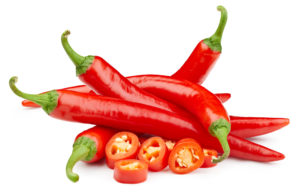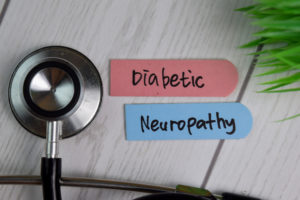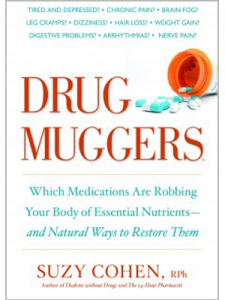It is very ironic that something so HOT as chile could provide such amazing neuropathy pain relief to millions of people. Sometimes you see it spelled as chili or chilli but no matter what culture you live in the same thought comes to mind: HOT!
Chile gets its heat from an alkaloid compound called “capsaicin” which mostly in the seeds of the pepper. That reminds me, if you don’t want your guacamole hot, leave out the seeds from the jalapeño. There’s actually a method of classifying the heat in peppers, based upon the work of Professor Wilbur Scoville, a chemist who worked for the drug company Parke Davis in 1912.
It’s called “Scoville” units, and sweet bell peppers measure out at zero Scoville units, compared to the bum-burning potential of a Ghost pepper of 1,000,000 Scoville units! Lightweights like me enjoy Habanero which rolls in at approximately 300,000 Scoville Units. Pure capsaicin ranks in at 15,000,000 Scoville units.
If you are curious to see where your favorite pepper ranks in terms of heat, visit How Hot Are My Chiles?
 When you compare a chile to an orange, ounce for ounce, the chile actually has more vitamin C!
When you compare a chile to an orange, ounce for ounce, the chile actually has more vitamin C!
Capsaicin preparations may be able to help you if you have nerve pain, which is termed “neuropathy.” This nerve pain sometimes goes hand in hand with syndromes like post-herpetic neuralgia (PHN), autoimmune disorders or diabetic neuropathy. Now let’s talk about how putting the ‘flame’ on pain helps reduce it!
Weird I know. When capsaicin is applied to the skin it causes a brief initial sensitization, where you might feel some pain, but if you do it properly, it shouldn’t be painful. After a few applications, there is a desensitization of the local pain nerves.
In other words, the pain may still be there, but you don’t feel it because your nerves are a little numb to it. This effect occurs through repeated stimulation of TRPV1 (transient receptor potential vanilloid-1) nerve fibers. These heat-sensing fibers alert you when you’ve put your finger on the stove!
A study in Diabetes 2012, tested the hypothesis that dietary capsaicin (yes dietary, as in eating foods prepared with peppers, or using liquid extract supplements, etc), regulates glucose homeostasis by waking up these TRPV1 receptors.
It’s like a football pass, it’s not actually the TRPV1 receptors… it is more that those ‘pass the ball’ and signal GLP-1 secretion from your intestinal cells/tissues (your digestive tract).
The animal model showed how mice fed a capsaicin-enhanced diet for about 6 month and experienced increased GLP-1 and insulin secretion. It improved insulin levels, lowered blood glucose and improved glucose tolerance. Unlike metformin, peppers are not drug muggers of B12.
This study suggests there’s a promising approach for diabetes with hot stuff. Does it mean you want to take cayenne liquid extract every day? I don’t think so, although you can. I keep a bottle of this at my own house just in case an elderly family member, or other visitor to ‘the mile high city’ ever has minor heart trouble or shortness of breath.
This capsaicin story speaks to something broader that we can all do. Sprinkle cayenne in your guacamole, avocado toast, roasted tomato soup or chicken salad, it’s really good. Put habanero in your scrambled eggs, maybe take that blackened chicken a little hotter next time!
A 2013 study in Current Medicinal Chemistry showed that resveratrol eases diabetic neuropathy too, but this herb is taken orally, it’s not a cream. Resveratrol was once thought to sweep up free radicals, and that’s all but today we know it activates SIRT1 and Nrf2 antioxidants, while shutting the floodgates to your pain-causing NF Kappa B pathway.
I taught you this in my diabetes book in 2010. Diabetes is a global epidemic, and very little is known about curing it. One of the painful problems is neuropathy. Over time, resveratrol protects against pins and needle sensations, numbness and neuronal cell death.
Resveratrol is one ingredient in GlucoScript capsules, my patent-pending dietary supplement intended to support you if you would like to have healthy insulin and blood sugar levels.* As it pertains to shingles or Post-Herpetic Neuralgia (PHN), capsaicin seems counter-intuitive because your skin already hurts.
Blisters from this virus can be excruciating and can last for months in some people. If you’re looking for GlucoScript, it’s sold at my website store.
The prescription Qutenza 8% Patch is available, however it is derived from a synthetic form of capsaicin. There are OTC patches available in all pharmacies. In a human study of 250 patients with diabetic neuropathy, half were given capsaicin cream and half were given a plain moisturizing placebo cream. Satisfactory treatment of this debilitating disorder (which can lead to amputations) has escaped physicians for decades.
 Patients receiving capsaicin cream enjoyed a nearly 70 percent reduction in neuropathic pain symptoms (after the initial transient burning of course). Controlling blood sugar and other cytokines is key to reducing diabetic neuropathy pain, so in case you missed my recent article entitled, The Signs of Diabetes Mimic Thyroid Disease, CLICK HERE.
Patients receiving capsaicin cream enjoyed a nearly 70 percent reduction in neuropathic pain symptoms (after the initial transient burning of course). Controlling blood sugar and other cytokines is key to reducing diabetic neuropathy pain, so in case you missed my recent article entitled, The Signs of Diabetes Mimic Thyroid Disease, CLICK HERE.
If you’d like to read another article I wrote on chile pepper, “Hot Stuff Can Heal You, Make a Date With Chile Pepper”

Suzy Cohen, has been a licensed pharmacist for over 30 years and believes the best approach to chronic illness is a combination of natural medicine and conventional. She founded her own dietary supplement company specializing in custom-formulas, some of which have patents. With a special focus on functional medicine, thyroid health and drug nutrient depletion, Suzy is the author of several related books including Thyroid Healthy, Drug Muggers, Diabetes Without Drugs, and a nationally syndicated column.

